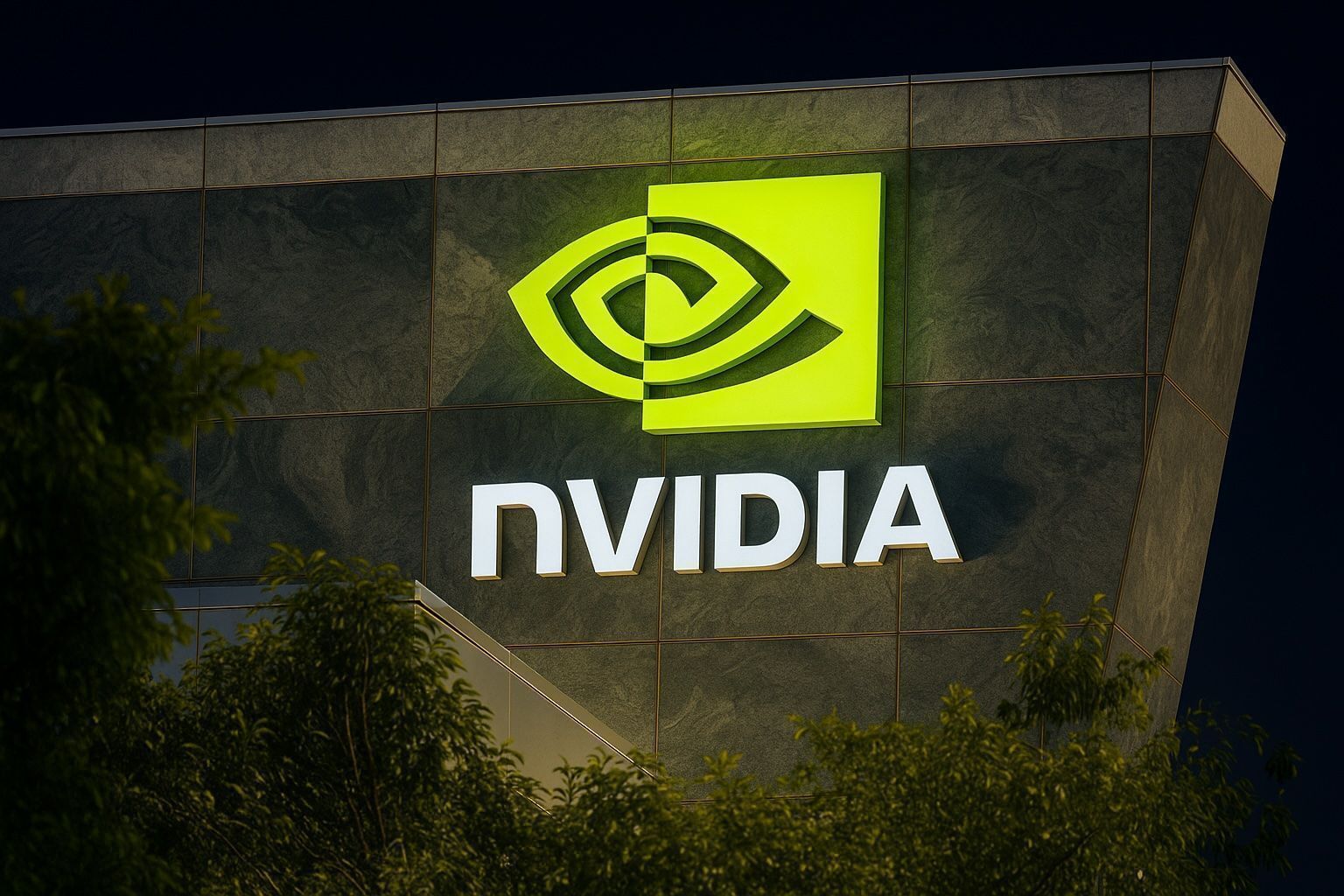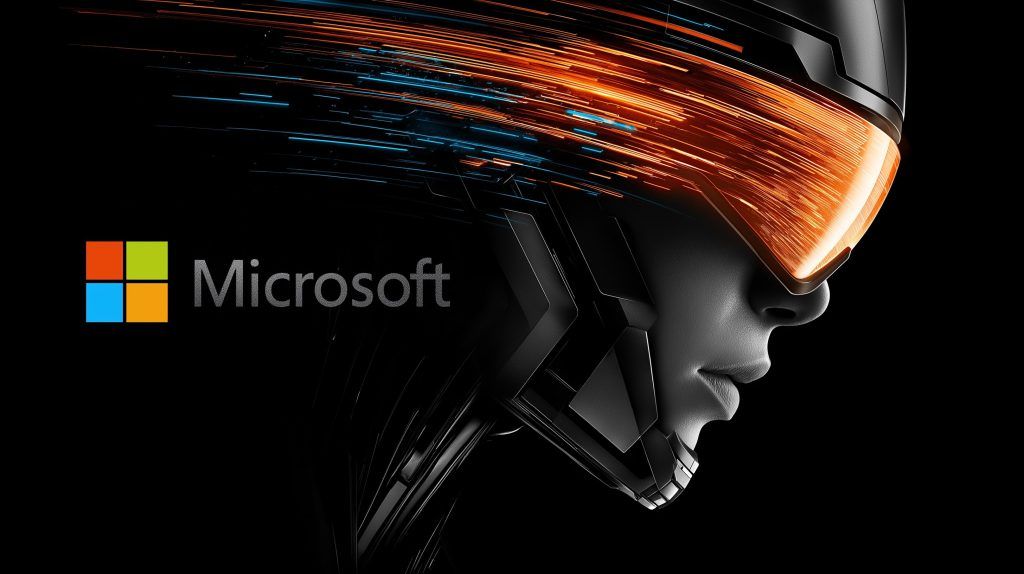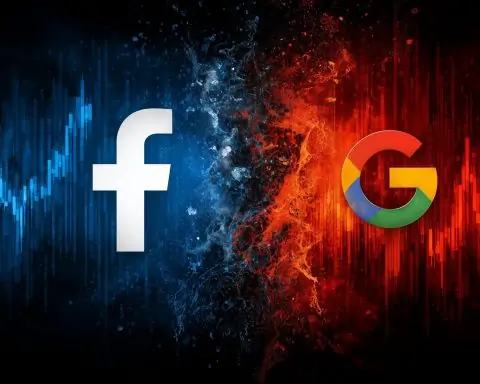- Record High Valuation: NVIDIA reached a historic $4.53 trillion market cap on Sept. 30, 2025, as its share price climbed to $186.58 [1].
- 2025 Earnings Surge: In Q2 FY2026 (quarter ended July 27, 2025) NVIDIA reported $46.7 billion revenue, up 56% year-over-year, driven by extraordinary demand for its AI-focused Blackwell GPUs [2]. The company continues massive buybacks ($24.3 b returned in H1) and raised its repurchase plan by $60 billion [3].
- Major AI Investments: NVIDIA announced a $100 billion strategic investment in OpenAI (Sept. 22, 2025) and a $5 billion equity stake in Intel (4% ownership), reinforcing its role as the industry’s AI hub [4] [5]. The Intel deal, for example, spurred a 23% jump in Intel’s stock on Sept. 18 [6].
- Analyst Optimism: The consensus among Wall Street analysts is strongly bullish. For example, Citigroup bumped its NVDA price target to $210 (from $200) and Barclays to $240 [7]. 36 of 45 analysts rate NVDA “Buy” (4 “Strong Buy”) [8], with an average 12-month target around $212 [9] [10]. Even Morgan Stanley raised its target to $206 based on higher 2026 estimates [11], and firms like Mizuho ($205) and Piper Sandler ($225) have likewise lifted targets [12].
- Potential Risks: Caution remains. One veteran investor warned that NVIDIA’s AI frenzy might echo past bubbles, noting OpenAI’s meteoric valuation leap as worrying [13]. Some strategists stress that tying NVIDIA closely to a single customer (OpenAI) could be “short-sighted” and invite new competitors [14]. Valuation is rich (P/E ~53 [15]), so any slowdown or rising competition could trigger a pullback.
- Comparative Strength: NVIDIA vastly outpaces peers. Its $4.5 T cap dwarfs Broadcom (~$1.3–1.5 T) and dwarfs AMD (~$261 B), Qualcomm (~$179 B), Intel (~$156 B) and ARM (~$150 B) [16] [17] [18]. 2025 revenues reflect this gap (NVIDIA’s trailing ~$165 B vs. AMD ~$29.6 B and Intel ~$53 B) [19] [20]. NVIDIA leads in AI/GPU technology (e.g. Blackwell platform), while rivals have more diverse focus: AMD (server CPUs/AI GPUs like MI350), Intel (new CEO, foundry deals, Xe GPUs), Qualcomm (mobile 5G/AI chips), Broadcom (network and custom AI ASICs), and Arm (chip designs/licensing).
- Expert Voices: Hargreaves Lansdown analyst Matt Britzman enthused that NVIDIA’s deal with OpenAI could be “worth as much as $500 billion” in future revenues [21]. eMarketer’s Jacob Bourne added that demand for NVIDIA GPUs “is effectively baked into” the AI model roadmap [22]. Conversely, Bokeh Capital CIO Kim Forrest cautioned that tying NVIDIA too closely to one customer may be “short-sighted”, and suggested competitors could exploit any weaknesses [23]. Former fund manager James Anderson bluntly warned of “bubble concerns” after the $100 B AI bet [24].
2025 Performance & Recent Highlights
NVIDIA’s stock has been on a tear in 2025. After reporting blowout Q2 (fiscal Q2 2026) earnings in late August – $46.7 B revenue (+56% YoY) and $1.05 EPS (beating estimates) [25] [26] – the company set aggressive guidance (Q3 sales ~$54 B). CEO Jensen Huang crowed that the new Blackwell AI chips “deliver an exceptional generational leap” with “extraordinary” demand [27]. In Q2 alone NVIDIA returned $24.3 B to shareholders (buybacks/dividends) and got another $60 B buyback boost in late Aug. [28]. The company’s flagship GPUs and NVLink interconnect have locked in major AI customers (“Magnificent Seven” like Microsoft, Google, etc.) [29].
On Sept. 30, 2025 NVIDIA shares set a new intraday high, closing up ~2.6% at $186.58, making it the first company ever to reach a $4.53 trillion market cap [30]. (For context, major competitors are far smaller: e.g. AMD’s market cap is ~$261 B [31]; Intel’s ~$156 B [32]; Qualcomm ~$179 B [33]; Broadcom ~$1.3–1.5 T [34]; Arm ~ $150 B [35].) The surge was fueled by Wall Street bullishness and deals: NVIDIA announced it would invest $100 billion in OpenAI (Sept. 22) to supply GPU capacity for future AI models [36]. It also agreed to pay 15% of Chinese H100 chip sales to the U.S. government (per Trump’s announcement) and secured an NSF partnership for AI research [37]. Separately, on Sept. 18 NVIDIA revealed a $5 billion stake in Intel, making it Intel’s third-largest shareholder (~4% of Intel) [38]. That move – aimed at joint PC/data-center chip development (but excluding Intel’s foundry) – lifted Intel’s stock over 20% [39], underscoring NVIDIA’s clout.
Future Outlook: Ratings, Forecasts & Risks
Analyst sentiment is overwhelmingly positive. Barron’s, Morgan Stanley, Goldman and others have repeatedly raised price targets this year. For example, Citigroup bumped its NVDA 12-month target to $210 (from $200) and Barclays to $240, both with buy/overweight ratings [40]. Truist, BofA, and others similarly nudged targets into the $210–$235 range after NVDA’s strong quarter [41] [42]. TipRanks reports a consensus 12-month target of about $212–$213, implying roughly 18–20% upside [43] [44]. Overall, 38 analysts rate NVDA a “Buy” (4 Strong Buy), only 4 Hold and 1 Sell [45].
Projections remain lofty. Morgan Stanley’s Aug. 2025 update raised NVDA’s target multiple (33× forward EPS) based on higher 2026 revenue/EPS (now $273 B rev, $6.51 non-GAAP EPS) [46] [47]. TheStreet (via Investing.com) noted Morgan’s forecast of continued “undershipped demand” even into 2026 [48]. Bernstein, BofA, Citi, JPMorgan and others also project huge growth (often citing the OpenAI deal and AI capex boom). 24/7 Wall St. forecasts year-end 2025 around $194 (a more conservative view) but still up ~7% from current levels [49].
However, even many bulls acknowledge risks. NVIDIA’s valuation is extreme (P/E ~50+ [50]), implying that almost all success is already baked in. CEO Jensen Huang himself has pushed back on “flatlining” analyst forecasts and insists AI demand is underestimated [51]. But skeptics worry about euphoria: former Baillie Gifford manager James Anderson told the Financial Times that the AI-era investing “gives me more reason to be concerned… that scale of jump…reminded me of 1999” [52]. Bokeh Capital’s Kim Forrest notes that NVIDIA essentially bet on its biggest customer (OpenAI) – “beneficial… but there can be dangers” if the companies become too intertwined [53].
In short, most analysts still see NVIDIA as the AI hardware leader and expect more growth. As one put it, “every gigawatt of AI data center capacity is worth about $50 billion in revenue” for NVIDIA, implying that its OpenAI deal alone could translate into ~$500 billion down the road [54]. But if AI spending cools or competition (AMD’s MI300, Intel’s new chips, etc.) heats up, the richly-valued stock could experience volatility.
Competitive Landscape: AMD, Intel, Qualcomm, Broadcom, Arm
Compared to its peers, NVIDIA is in a class of its own. Its market cap is roughly triple that of the next-most valuable U.S. chip stock (Broadcom ~$1.3–1.5 T [55]) and vastly higher than AMD, Qualcomm, or Intel. Its sales and profits similarly dwarf peers: trailing revenues about $165 B vs. Broadcom ~$60 B [56], Qualcomm ~$43 B [57], Intel ~$53 B [58], AMD ~$29.6 B [59], and Arm (as a licensee) only ~$2–3 B in sales (market cap ~$150 B [60]). NVIDIA’s net income is now in the tens of billions ($86.6 B trailing [61]), whereas Intel recently lost $18.8 B in 2024 [62].
In product terms, NVIDIA leads in AI accelerators and GPU computing. AMD is its closest rival in GPUs and high-performance CPUs: AMD just reported a record Q2 ($7.7 B, +32% YoY) driven by data-center EPYC CPUs and Radeon GPUs [63], but on a far smaller scale. AMD is rolling out its new Instinct MI350 AI GPUs and “Venice” CPUs [64] [65], and its recent acquisition of Xilinx adds FPGA technology. Intel, meanwhile, has stumbled – flat Q2 sales ($12.9 B) and a tiny non-GAAP EPS loss [66] – but is slashing costs and opening its foundry to partners. Notably, Intel is now collaborating with NVIDIA and even considering ventures with TSMC, indicating a sector in flux [67] [68].
Qualcomm focuses on mobile/5G and is branching into AI. It posted solid Q2 sales ($10.37 B, +10% YoY) thanks to Snapdragon chipsets [69], but is diversifying into automotive and server AI to offset Apple’s in-house modems. Broadcom – now a ~$1.5 T chip conglomerate – reported ~$15 B in Q2 revenue (up 20%) [70], powered by networking and storage chips. CEO Hock Tan forecasts “ten consecutive quarters” of growth, betting heavily on custom AI chips (like its new Tomahawk 6 network switch chip) [71]. Arm, recently IPO’d, sits on a ~$150 B cap [72] as the designer of chip architectures (used by Apple, others). Its value lies in licensing ubiquitous CPU/GPU designs (and pushing Neoverse for servers), rather than selling chips.
In sum, NVIDIA’s performance and pipeline (AI GPUs, OmniVerse simulation, self-driving platforms, etc.) far outstrip its peers’ current offerings. This dominance is reflected in its stock surge: “the premier manufacturer of components critical to the surge in AI”, as one analyst described [73], capturing most of the sector’s upside. The comparisons suggest NVIDIA can continue commanding premium growth – but also that its stock is sensitive to how the AI “race” plays out among a field of hungry, well-funded rivals.
Sources: NVIDIA’s earnings and press releases [74] [75]; Reuters and news reports on recent deals and market moves [76] [77] [78]; analyst and investor commentary [79] [80]; consensus forecasts and stock metrics from financial analysts and aggregators [81] [82] [83] [84]. These reflect information available as of Oct 1, 2025.
References
1. seekingalpha.com, 2. nvidianews.nvidia.com, 3. nvidianews.nvidia.com, 4. www.reuters.com, 5. www.reuters.com, 6. www.reuters.com, 7. www.marketbeat.com, 8. www.marketbeat.com, 9. www.tipranks.com, 10. www.marketbeat.com, 11. www.investing.com, 12. www.investing.com, 13. www.investing.com, 14. www.reuters.com, 15. www.marketbeat.com, 16. www.investopedia.com, 17. www.investopedia.com, 18. companiesmarketcap.com, 19. www.investopedia.com, 20. www.investopedia.com, 21. www.reuters.com, 22. www.reuters.com, 23. www.reuters.com, 24. www.investing.com, 25. nvidianews.nvidia.com, 26. www.marketbeat.com, 27. nvidianews.nvidia.com, 28. nvidianews.nvidia.com, 29. 247wallst.com, 30. seekingalpha.com, 31. www.investopedia.com, 32. www.investopedia.com, 33. www.investopedia.com, 34. www.investopedia.com, 35. companiesmarketcap.com, 36. www.reuters.com, 37. www.investing.com, 38. www.reuters.com, 39. www.reuters.com, 40. www.marketbeat.com, 41. 247wallst.com, 42. www.marketbeat.com, 43. www.tipranks.com, 44. 247wallst.com, 45. www.marketbeat.com, 46. www.investing.com, 47. www.investing.com, 48. www.investing.com, 49. 247wallst.com, 50. www.marketbeat.com, 51. www.ainvest.com, 52. www.investing.com, 53. www.reuters.com, 54. www.reuters.com, 55. www.investopedia.com, 56. www.investopedia.com, 57. www.investopedia.com, 58. www.investopedia.com, 59. www.investopedia.com, 60. companiesmarketcap.com, 61. www.investopedia.com, 62. www.reuters.com, 63. ir.amd.com, 64. ir.amd.com, 65. ir.amd.com, 66. www.intc.com, 67. www.reuters.com, 68. www.reuters.com, 69. wccftech.com, 70. www.reuters.com, 71. www.reuters.com, 72. companiesmarketcap.com, 73. 247wallst.com, 74. nvidianews.nvidia.com, 75. ir.amd.com, 76. www.reuters.com, 77. www.reuters.com, 78. www.reuters.com, 79. www.reuters.com, 80. www.investing.com, 81. www.marketbeat.com, 82. 247wallst.com, 83. www.investopedia.com, 84. www.investopedia.com










